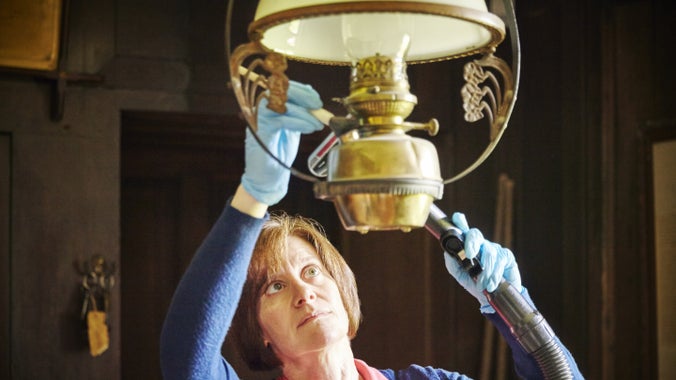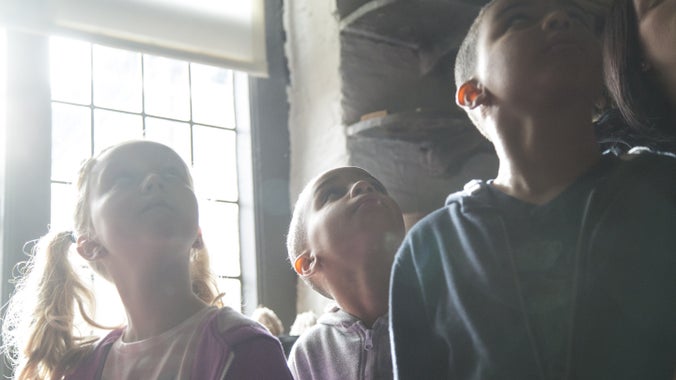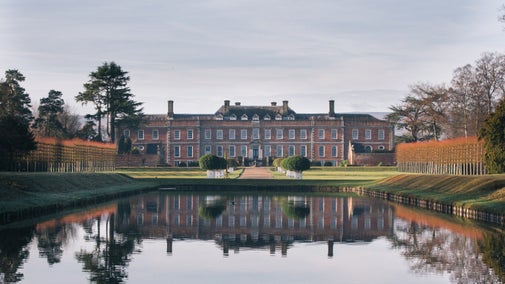
Donate
Everyone needs nature, now more than ever. Donate today and you could help people and nature to thrive at the places we care for.

Erddig’s collection of 30,000 items is the second largest in the National Trust. Minimising deterioration and conserving the collection for future generations to enjoy is a big part of our work in the house, where sunlight is one of the main causes of damage. We work hard to measure and limit light damage, using specialist techniques – and adjusting more than 100 blinds.
It’s the question we get asked the most. It's partly because we feel that universal electric lighting would go against the decision of the Yorke family not to introduce electricity to the house they owned up until 1973.
But more importantly, our rooms are set up this way to help preserve the collection while still allowing visitors to experience this eclectic home.
Sometimes the rooms appear darker than you might be used to at home, so you may have to stand a little closer to the windows to read information, or take some time to allow your eyes to adjust.

Have you noticed how photographs facing a window at home fade quickly? This is because the light causes deterioration of the pigments in the ink and the colour then becomes bleached.
This happens to most materials found within Erddig – wood changes colour and becomes brittle, textiles fade and disintegrate and natural history (like taxidermy) fades and breaks down. This damage is not only cumulative, but irreversible.
All but one of the rooms in the house are classified as ‘highly light sensitive’ due to their decoration and contents. This means that we need to limit total light exposure to fewer than 150,000 lux hours (a measure of brightness) per year in these spaces.
The average human eye needs no more than about 150 lux to see acceptably. Anything brighter makes little impact on visibility, but has a massive impact on fragile, light-sensitive objects. Precious items would absorb more energy, with no gain to our visitors.
The simplest way to limit light damage is to keep the rooms in complete darkness for as long as possible, limiting visiting hours and only opening shutters and blinds minutes before visitors enter.
To keep to 150,000 lux hours in a year, we only open Erddig’s rooms for 1,000 hours annually.
We keep out the most damaging light – ultraviolet – by applying a special film to the windowpanes. If you see a rippling effect on the glass it’s often this film coming to the end of its 10- to 15-year lifespan, rather than the original nature of the historic glass.
The conservation team are kept busy throughout the day adjusting Erddig’s 100 blinds to control the amount of visible light in a room. Blinds block out the sun’s damaging rays when it’s bright, but also need to be raised on overcast days so that visitors can see and enjoy the rooms.

Throughout the house you may notice little pieces of card with blue fabric inside. These are dosimeters used to measure annual light exposure in sensitive areas and on sensitive items, like the boulle cabinet in the Saloon.
At the end of the year we send the dosimeters to a laboratory, where the fading on the blue fabric is compared with that of a known sample. This gives us an accurate reading of the light exposure, so we can review how we’re managing light in that area over a whole year.
Our conservation team take daily spot readings of light levels using a handheld digital Lux meter, and we undertake large light-monitoring exercises to collect data for analysis. This all helps us make more informed room plans, showing the areas that receive the most light in relation to the positions of windows and blinds.
We combine all this data to help us determine annual light exposure estimates for sensitive areas that are not monitored with a dosimeter.
With your ongoing support, we're able to continue our vital conservation work. Thank you for helping to protect these special places.

Everyone needs nature, now more than ever. Donate today and you could help people and nature to thrive at the places we care for.
Find out about the High Sheriff who lived beyond his means when he built Erddig, the rich London lawyer who extended and redecorated it and 240 years of the Yorke family.

Why did the Yorkes remember their staff in pictures and poems? Discover a day in the servants’ lives at Erddig and learn why a housekeeper ended up in court.

Saved from ruin, Erddig is a rare survivor teeming with treasures. From servants’ portraits to fine furnishings, discover the top things to see and do when you visit the house.

Erddig has the one of the largest collections of items within the entire National Trust. With a total of 30,000 to care for, it's no mean feat for the house team of conservators and volunteers. We’re an accredited museum too.
